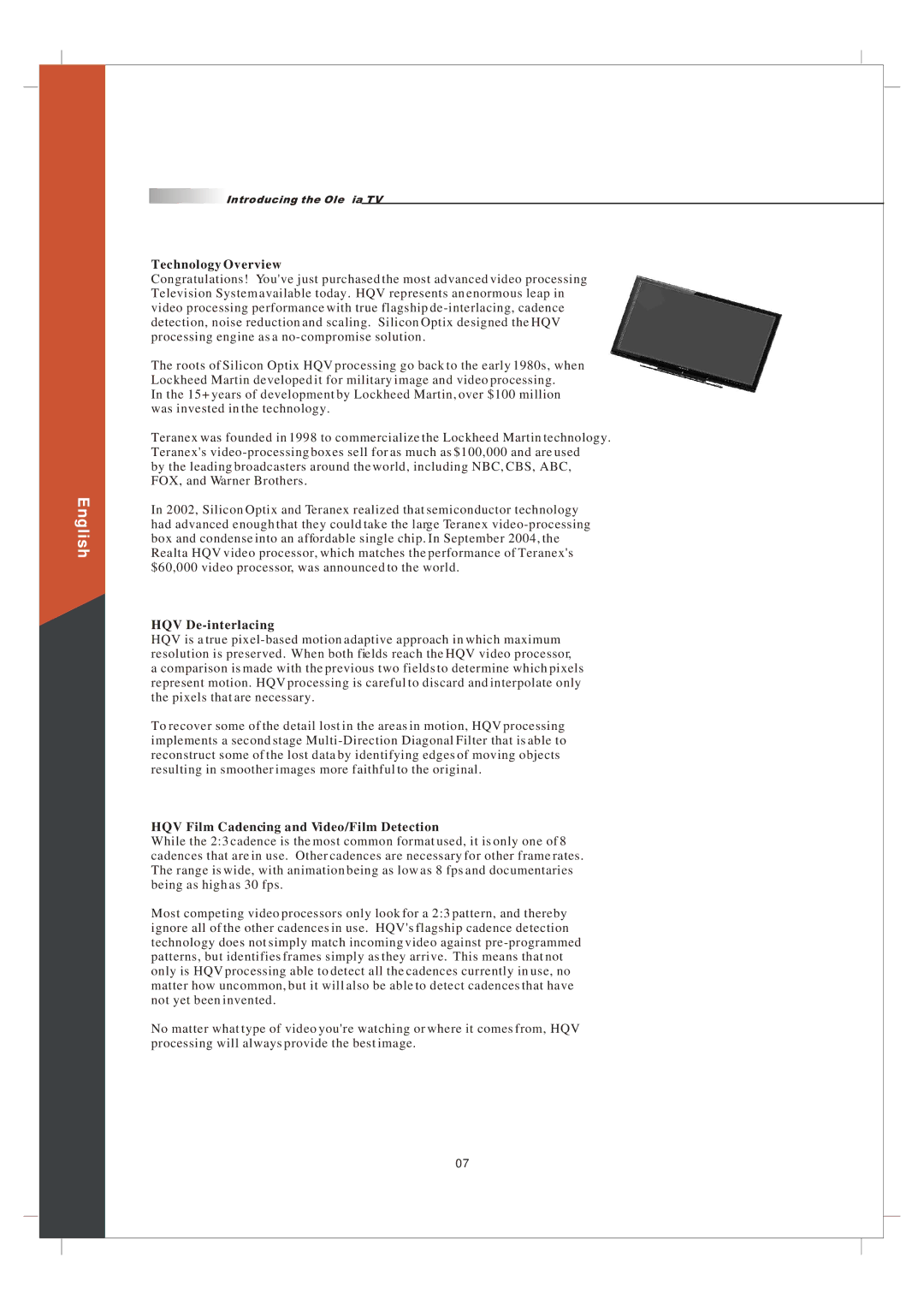
English
![]() Introducing the Olevia TV
Introducing the Olevia TV
Technology Overview
Congratulations! You've just purchased the most advanced video processing Television System available today. HQV represents an enormous leap in video processing performance with true flagship
The roots of Silicon Optix HQV processing go back to the early 1980s, when Lockheed Martin developed it for military image and video processing.
In the 15+ years of development by Lockheed Martin, over $100 million was invested in the technology.
Teranex was founded in 1998 to commercialize the Lockheed Martin technology. Teranex's
by the leading broadcasters around the world, including NBC, CBS, ABC, FOX, and Warner Brothers.
In 2002, Silicon Optix and Teranex realized that semiconductor technology had advanced enough that they could take the large Teranex
$60,000 video processor, was announced to the world.
HQV De-interlacing
HQV is a true
To recover some of the detail lost in the areas in motion, HQV processing implements a second stage
HQV Film Cadencing and Video/Film Detection
While the 2:3 cadence is the most common format used, it is only one of 8 cadences that are in use. Other cadences are necessary for other frame rates. The range is wide, with animation being as low as 8 fps and documentaries being as high as 30 fps.
Most competing video processors only look for a 2:3 pattern, and thereby ignore all of the other cadences in use. HQV's flagship cadence detection technology does not simply match incoming video against
No matter what type of video you're watching or where it comes from, HQV processing will always provide the best image.
07
